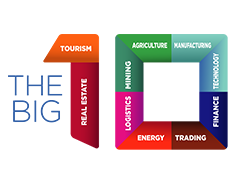In today’s interconnected world, the pressure to adopt sustainable practices is reshaping industries—and nowhere is this more evident than in global trade and supply chains. As consumers, investors, and governments demand greater environmental and social responsibility, businesses are reimagining how goods are produced, transported, and delivered across the globe.
Let’s dive into how global trade and supply chains are evolving to meet the rising call for sustainability—and why these changes are shaping the future of commerce.
The Sustainability Imperative in Global Trade
Sustainability is no longer a nice-to-have; it’s a business necessity. Key drivers include:
-
Consumer expectations: Shoppers increasingly prefer brands that demonstrate ethical sourcing and low carbon footprints.
-
Investor pressure: ESG (Environmental, Social, and Governance) criteria are now central to investment decisions.
-
Regulatory requirements: Governments are implementing stricter environmental laws and trade regulations, such as the EU’s Carbon Border Adjustment Mechanism.
-
Climate change risks: Disruptions like extreme weather events are exposing the vulnerabilities of traditional supply chains.
As a result, companies involved in global trade must adapt—or risk being left behind.
Key Trends: How Supply Chains Are Becoming More Sustainable
1. Greening the Logistics Sector
The transportation of goods—by ship, air, and truck—is a major source of carbon emissions. Companies are tackling this challenge by:
-
Investing in cleaner fuels (like biofuels and LNG)
-
Electrifying fleets of trucks and delivery vehicles
-
Optimizing shipping routes to reduce fuel consumption
-
Partnering with green logistics providers that prioritize emissions reduction
Example: Major shipping companies are committing to net-zero emissions by 2050, and new carbon-neutral vessels are already being tested.
2. Sustainable Sourcing and Ethical Procurement
Supply chains are becoming more transparent as businesses seek to ensure that the materials and products they buy are ethically and sustainably sourced. This includes:
-
Certifying suppliers through programs like Fairtrade, FSC (Forest Stewardship Council), or Rainforest Alliance
-
Tracing raw materials using blockchain technology for greater transparency
-
Working directly with producers to encourage sustainable practices at the source
Impact: Ethical sourcing not only protects the planet but also enhances brand reputation and consumer trust.
3. Embracing the Circular Economy
The linear model of “take, make, waste” is giving way to a circular economy, where materials are reused, recycled, and repurposed.
In supply chains, this shift looks like:
-
Designing products for durability and recyclability
-
Implementing take-back programs for returned goods
-
Creating closed-loop supply systems where waste becomes raw material for new production
Result: Less waste, lower resource consumption, and new revenue opportunities from recycled goods.
4. Digital Transformation for Sustainable Supply Chains
Technology is playing a critical role in making supply chains more efficient and sustainable. Innovations include:
-
IoT sensors that monitor real-time energy usage and emissions
-
AI-driven analytics to optimize inventory and reduce overproduction
-
Smart contracts that enforce sustainability standards across the supply chain
-
Supply chain mapping tools to identify and mitigate environmental and human rights risks
Outcome: Data-driven supply chains that are leaner, greener, and more resilient.
5. Policy and Regulation Driving Change
Governments around the world are introducing regulations that push companies toward more sustainable practices, such as:
-
Mandatory ESG reporting requirements
-
Carbon taxes and emissions trading systems
-
Sustainable trade agreements that embed environmental clauses
Businesses must stay ahead of these regulations or face penalties, market access barriers, or loss of competitive advantage.
Real-World Examples of Sustainable Supply Chains
-
Patagonia: The outdoor brand’s supply chain focuses on fair labor practices, recycled materials, and full transparency from source to shelf.
-
Unilever: The multinational corporation sources 67% of its agricultural raw materials sustainably and aims for net-zero emissions across its value chain by 2039.
-
Maersk: The global shipping giant is investing heavily in green methanol-powered ships and aims to be carbon-neutral by 2040.
These companies show that sustainability and profitability can go hand in hand.
Conclusion: The Future of Global Trade Is Green
Sustainability is no longer an optional add-on for global trade and supply chains—it’s an essential foundation for long-term success. Companies that invest in greener practices, ethical sourcing, and digital innovation are not only minimizing their environmental footprint but also building resilient, future-ready operations.
In an era where climate change, social justice, and economic growth are deeply intertwined, adapting to sustainability demands isn’t just the right thing to do—it’s smart business.
Because the businesses that lead on sustainability today will be the ones thriving in the global economy of tomorrow.
Read more on The Big 10:
Maritime and Logistics: Global Trade and the Future of Shipping and Supply Chain Management
Trade and Economic Integration Between Africa and the Middle East
Cross-Border Trade and Investment in Africa


